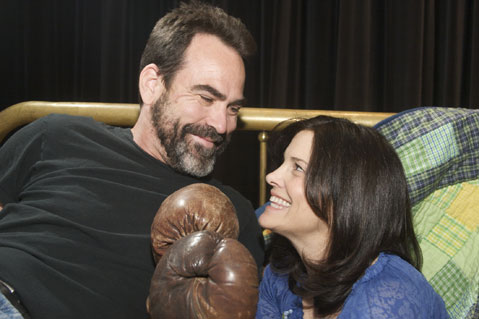Bedtime in Detroit at Center Stage Theatre
A New Play about America’s Auto Industry

Dramatic Women is among Santa Barbara’s most cherished theatrical organizations, and a genuine throwback to a time when politics and the theater were loving bedfellows in the best sense. In her latest play, Dramatic Women founder and longtime Santa Barbara resident Ellen K. Anderson explores her background and heritage as a native of Detroit, Michigan, against the backdrop of a declining auto industry and flight from the urban center. I spoke with Anderson recently about Bedtime in Detroit and her motives in writing about her hometown now.
How did you come to write a play called Bedtime in Detroit? I tried writing a novel with the title, but I was living alone in a dark flat in Ireland at the time, and at night William Shakespeare came to me in a dream and said, “What you’re writing isn’t a novel, what you’re writing is a play.” And finally I admitted to myself that Shakespeare was right, because when it comes to my characters, I don’t care what she was wearing, or if there was a twinkle in her eye. I just care about what comes out of her mouth.
What’s the vibe like these days in Detroit? The vibe is good. The vibe is always good in Detroit. The play is set on Devil’s Night, which is the night before Halloween. So last year, I went back to Detroit for Halloween, and I went out on Devil’s Night to fact-check. I went to Belle Isle, where there’s an old abandoned casino. They had a haunted house there, and so it was basically me and a bunch of loud, happy black families going through this haunted house.
Sounds like fun. What did you see? They took us into a very scary basement where I did not have a good time. Too many things were jumping out at me. But afterward, we went on a hayride that was better. It was a hayride through streets full of empty buildings—lots and lots of empty buildings. But then I went to a party at the museum of art, and that was totally upscale and not frightening at all.
Interesting. So how does this Devil’s Night setting figure in the play? The play is set on Devil’s Night in an empty firehouse. In Detroit, Devil’s Night is infamous as a time when people burn empty buildings.
So it’s not necessarily bedtime for everyone, because some folks are out causing trouble, is that right? Yes, but there are others who go out and protect buildings. They meet at community centers, they wear white, and they call it “Angel’s Night.” They’ve been doing it ever since 1986, which was the worst year for Devil’s Night. In 1986, they burned over 800 buildings.
How many characters are in the play? Just four—a mother (Sage Parker), her grown daughter (Lisa Sanderson), the mother’s lover (Jeff Mills), and a black man named Henry Ford (Paul Taylor). Oh, and there’s a motorcycle in the play. It’s the day that the auto industry finally goes bust, so they are all expecting a really bad Devil’s Night at the abandoned firehouse.
How does this fit in with your own version of Detroit? I was the first generation of my family to attend university, and I did it there, so Detroit and the auto industry mean a lot to me. My dad took me down to the art museum when I was little and taught me about the factory and the jobs that he and my uncles did in the factory by showing me Diego Rivera murals. Later, I went back and did what you could do there back in those days—smoke cigarettes and write bad poetry under the Diego Rivera murals, both of which I did a lot.
4•1•1
Bedtime in Detroit opens at Center Stage Theater on March 26 and runs through April 3. For more information, call 963-0408 or visit centerstagetheater.org.



